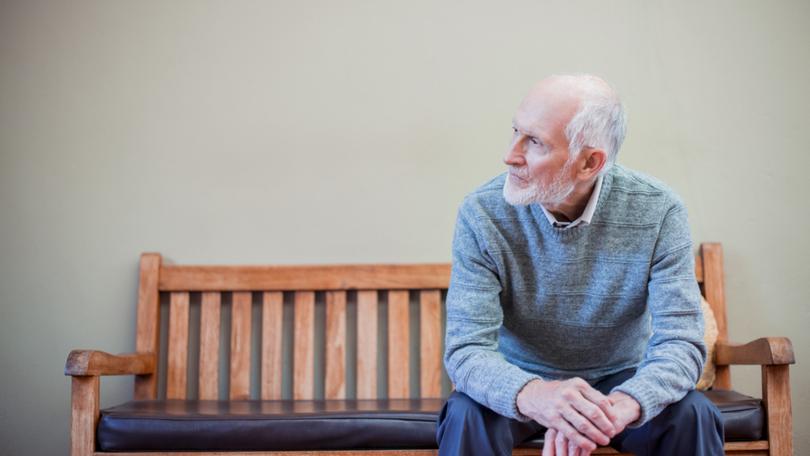Nick Bruining: How aged care fee changes could cost Mum and Dad an extra $100,000 each

Many seniors could be facing a $100,000 increase in total aged-care costs when planned funding changes take effect next year.
There are also fears the substantial hike could create a supply shortage as families race to move their elderly loved ones into care ahead of the changes on July 1.
Experts have been digging into the detail of the Federal Government’s proposed changes to the aged care system following Coalition backing for the New Aged Care Bill. The legislation was introduced earlier this month and is expected to be passed with minor amendments later in the year.
Sign up to The Nightly's newsletters.
Get the first look at the digital newspaper, curated daily stories and breaking headlines delivered to your inbox.
By continuing you agree to our Terms and Privacy Policy.Mark Sheldon-Stemm — an aged care industry adviser and member of the Aged Care Industry Association — welcomed the reforms, saying they would give operators a more secure financial footing.
“The new funding arrangements are quite different to some of the earlier proposals and are generally more palatable,” Mr Sheldon-Stemm. said. “That included an aged care levy that would have been similar to the Medicare levy.”
The changes to the overall system are extensive but the most financially significant for individuals are those affecting residential aged care.
“It’s really being designed so that residential aged care becomes an end-of-life or dementia option with in-home care, the preferred way forward,” Mr Sheldon-Stemm said.
Under current arrangements, someone entering an aged care facility pays a fee for the accommodation component and a separate fee for their daily care.
Aged care financial advice specialist Brenda Will said for those with relatively modest financial resources behind them, the accommodation capital outlay could be significant.
“In most cases, individuals purchase the rights to a room with a lump-sum amount called a refundable accommodation deposit,” Ms Will said. “These will vary depending on the type of room, demand and the location.“
Without further government approval, a facility can charge a RAD of up to $550,000. This might be for a top-of-the-range room with an ensuite bathroom. With special government approval, the RAD can be higher — some WA operators charge a RAD of more than $1 million for some rooms.
The accommodation costs can be made as a single lump-sum RAD payment, by a daily accommodation payment — or a combination of the two.
Once the person exits the facility, typically when they die, the full amount of the government-guaranteed RAD is required to be repaid in full to the estate within 14 days. The RAD normally attracts no interest so, in effect, it becomes an interest-free loan to the facility operator.
Under the changes, the maximum RAD will rise to $750,000, and for the first time this amount will be indexed.
Significantly, the full RAD will not be refunded. Instead, the operator can retain 2 per cent of the RAD amount a year for up to five years. That means a person paying a $500,000 RAD could see up to $50,000 retained, with the refunded amount reduced to $450,000.
For many people, Mr Sheldon-Stemm said the RAD retention was unlikely to be a major issue.
“While the average stay for an individual in aged care used to be more than two years, that’s now down to about 11 months,” he said.
In part, that’s because there are now more home care packages available, allowing people to remain at home for longer.
Under other changes, the actual care fees will be separated between clinical care costs and means-tested, non-clinical care costs. Added to this will be a “hotelling supplement” for the well-heeled.
“This hotelling supplement may be up to $12.55 a day, depending on your means-testing. So potentially an extra $4580.75 a year under the new system,” Ms Will said.
In addition to all of these statutory costs, the facility may also still charge an “additional service” fee, which can be an extra $10 to $30 — or more — per day.
There will also be an increase in the lifetime cap amount. Under current rules, the maximum lifetime means-tested fee payable is an indexed $82,018.15, which increases quarterly. That amount includes all of the means-tested contributions an individual makes to in-home care as well as residential care.
On July 1 next year, that lifetime cap rises nearly $50,000 to $130,000. When added to the new five-year RAD retention rule, an individual who resides in a residential facility could easily end up paying $100,000 more than under the current system.
Ms Will said her clients with elderly parents were already asking if they should be placing their loved ones into aged care ahead of the changes.
“We’ll see what happens, but there might well be greater pressure to find available places in the coming months,” she said.
Nick Bruining is an independent financial adviser and a member of the Certified Independent Financial Advisers Association
Originally published as Nick Bruining: How aged care fee changes could cost Mum and Dad an extra $100,000 each

